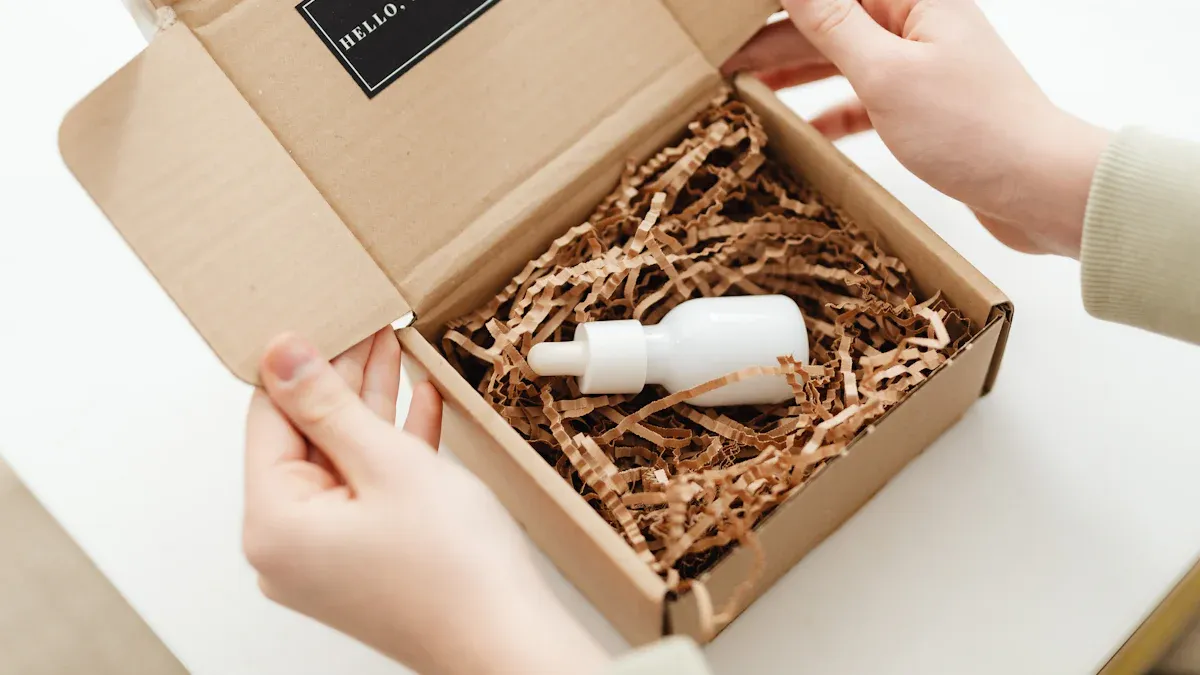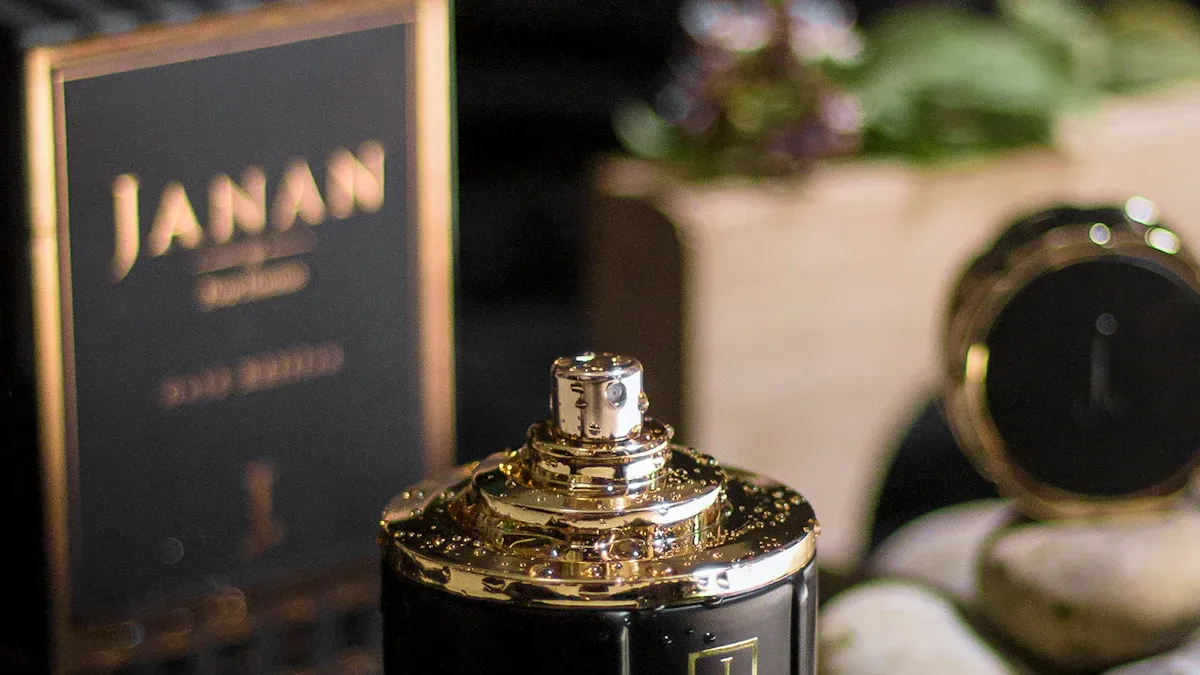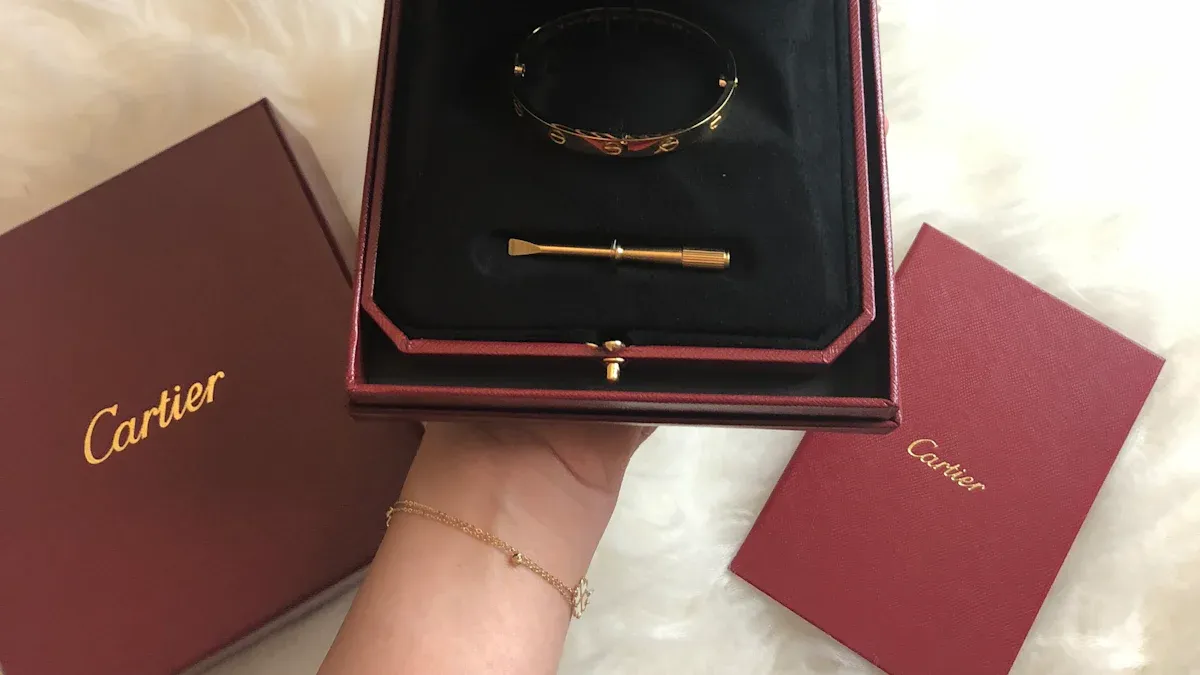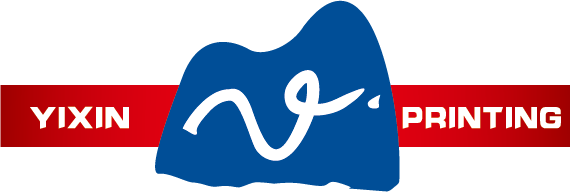
Luxury paper box manufacturing thrives on the artful use of specialty paper and finishes. These materials define the packaging's quality and elevate its appeal. In 2025, brands like Gucci and Estée Lauder are leading innovations with sustainable designs. Packaging now reflects a brand image while meeting consumer demand for eco-friendly and personalized solutions.
Key Takeaways
Special papers like duplex board and art paper make boxes stronger and look better, which is important for fancy brands.
Eco-friendly materials, like kraft paper, are becoming more popular because people want greener products.
Designs like embossing and foil stamping make boxes look fancy and improve how people feel about the brand.
Specialty Papers in Luxury Paper Box Manufacturing

Duplex Board: Strength and Versatility
When I think about durable and versatile materials for luxury paper box manufacturing, duplex board stands out. Its coated surface enhances both strength and visual appeal, making it ideal for premium packaging. This high-quality paperboard is engineered to handle heavy-duty applications while maintaining a refined look. For example, the coated duplex board with a grey back offers excellent rigidity, ensuring that luxury items remain protected. Its smooth surface also supports intricate printed designs, which is crucial for creating customized specialty paper packaging that aligns with a brand's identity.
Art Paper: Smooth Texture and Printability
Art paper is my go-to choice for achieving a flawless finish in packaging. Its smooth texture ensures high-quality printing, making it perfect for detailed designs. Studies show that factors like surface roughness and microtopography significantly impact print quality. Art paper excels in these areas, offering a polished appearance that enhances the overall aesthetic of luxury paper boxes. Whether it’s for bold graphics or subtle textures, this specialty paper delivers exceptional results.
Ivory Paper Board: Premium Look and Feel
Ivory paper board embodies sophistication. Its creamy white surface and sturdy composition make it a favorite for premium packaging. I’ve noticed that its luxurious feel instantly elevates the unboxing experience. This high-quality paperboard is often used for high-end products, where both appearance and durability are non-negotiable.
Kraft Paper: Eco-Friendly and Rustic Appeal
Kraft paper combines sustainability with a rustic charm. Its eco-friendly properties, such as biodegradability and energy-efficient production, make it a responsible choice for packaging. I appreciate how its natural texture adds an organic touch to luxury paper boxes. Many brands now use kraft paper to align with consumer preferences for sustainable and premium packaging solutions.
Metallic Paper: Glamorous and Sophisticated Finish
Metallic paper adds a touch of glamour to packaging. I’ve seen how its reflective surface captures attention and conveys a sense of luxury. Experts agree that metallic finishes enhance shelf appeal and influence purchasing decisions. This specialty paper is perfect for creating high-end designs that stand out in competitive markets.
Soft-Touch Paper: Velvety Texture for Premium Appeal
Soft-touch paper offers a tactile experience that I find irresistible. Its velvety texture adds a layer of sophistication to luxury paper boxes. This material not only looks premium but also feels indulgent, making it a popular choice for brands aiming to create memorable unboxing experiences.
Finishes That Elevate Luxury Packaging

Embossing and Debossing: Adding Depth and Texture
Embossing and debossing are two techniques I often recommend for creating depth in packaging designs. Embossing raises a design above the surface, giving it a three-dimensional effect, while debossing presses the design below the surface for a subtle texture. Both methods enhance the tactile and visual appeal of luxury packaging. For example, embossing is perfect for highlighting logos, while debossing adds understated elegance to patterns.
Foil Stamping: Metallic Accents for Elegance
Foil stamping is my go-to choice for adding a touch of sophistication to luxury paper boxes. This technique uses heat and pressure to apply metallic foil to specific areas, creating a mirror-like shine. Compared to metallic ink, foil stamping offers higher reflectiveness and durability, making it ideal for premium packaging.
UV Coating: Glossy and Matte Effects
UV coating is a versatile finish that I find invaluable for achieving both glossy and matte effects. Glossy coatings amplify color vibrancy and clarity, while matte coatings offer a non-reflective, sophisticated look. These finishes not only enhance aesthetics but also protect the packaging from scratches and smudges.
UV coatings enhance visual aesthetics and robustness.
They provide resistance against scratches and smudges.
Glossy finishes enhance color vibrancy and clarity without hazing.
Glossy coatings enhance original tones and vibrancy without obscuring designs.
Matte coatings soften designs while preserving finer details.
Soft-Touch Lamination: A Tactile Luxury Experience
Soft-touch lamination is one of my favorite finishes for creating a luxurious feel. This process involves applying a plastic film to the surface, resulting in a velvety texture that feels premium. A survey revealed that 72% of Americans consider packaging design when making purchase decisions, underscoring the importance of tactile qualities. Soft-touch lamination not only enhances the aesthetic appeal but also adds durability, making it a popular choice for high-end brands.
Spot Varnish: Highlighting Key Design Elements
Spot varnish is a technique I often use to draw attention to specific design elements. By applying varnish selectively, it creates contrast and texture, making logos or text stand out. This method is perfect for premium items like luxury invitations or business cards. Spot varnish highlights key details effectively, ensuring the packaging leaves a lasting impression.
Spot varnish creates contrast between different design parts.
It highlights particular design elements effectively.
The application is selective, requiring custom tooling and precise registration.
Matte Finishes: Sophisticated Non-Glossy Appearance
Matte finishes are ideal for brands aiming to convey sincerity and warmth. Research shows that matte packaging resonates with consumers who value these qualities. I’ve found that matte finishes add a sophisticated, non-glossy appearance to upscale packaging, enhancing the perception of quality. This finish is perfect for creating a refined and elegant look.
The Role of Material Selection in Luxury Packaging
Enhancing Product Protection and Durability
I’ve always believed that the primary role of packaging is to protect the product. In luxury paper box manufacturing, material selection plays a critical role in ensuring durability and safeguarding the contents. For instance, studies comparing Polyamide 66 with other resins highlight its superior performance in terms of durability and protection. Similarly, high-performance compounds have been engineered to enhance product safety.
Reflecting Brand Identity and Prestige
Material choices directly influence how a brand is perceived. I’ve noticed that luxury brands often use specialty paper and finishes to create a strong brand image. For example, prestige pricing strategies rely on high-quality materials to convey exclusivity and luxury. This approach appeals to affluent customers and those seeking excellence.
Addressing Environmental Concerns with Sustainable Options
Sustainability has become a cornerstone of luxury packaging. I’ve seen brands adopt sustainable packaging solutions to meet consumer demand for eco-friendly products. For instance, 42% of consumers prefer brands that use recyclable materials, while 45% check for recyclability labels before purchasing. François-Henri Pinault, Chairman of Kering, emphasizes that sustainability is now a key driver of profits for luxury brands.
Key sustainable practices include:
Reducing and removing unnecessary packaging.
Designing reusable and refillable packaging.
Increasing the use of post-consumer recycled materials.
Replacing petroleum-based plastics with recyclable bioplastics.
Balancing Cost and Quality in Material Choices
Balancing cost and quality is a challenge I often encounter in luxury paper box manufacturing. High-quality materials like soft-touch paper or metallic finishes can elevate the packaging but come at a premium. Brands must carefully evaluate their target audience and production budgets to strike the right balance. By investing in sustainable packaging solutions, brands can also reduce long-term costs while appealing to eco-conscious consumers.
Trends in Luxury Paper Box Manufacturing in 2025
Innovations in Sustainable Materials
Sustainability has become a driving force in luxury packaging. I’ve noticed brands increasingly adopting innovative materials that reduce environmental impact while maintaining premium quality. For instance, Giorgio Armani and Helena Rubinstein have optimized their packaging designs to improve sustainability across the supply chain. Studies also highlight the use of bio-sustainable materials, such as biodegradable composites, which align with consumer demand for eco-friendly solutions.
The luxury packaging market reflects this shift. Paper and board materials are now preferred, showcasing a commitment to sustainability. With a projected growth rate of 5.2% CAGR, the market is expected to reach $27.96 billion by 2034. This growth underscores the importance of sustainable practices in luxury paper box manufacturing.
Integration of Smart Packaging Features
Smart packaging is revolutionizing how brands interact with consumers. I’ve seen examples where QR codes and NFC tags are embedded into luxury boxes, offering interactive experiences. These features provide product information, authenticity verification, and even personalized messages.
This trend aligns with the rise of e-commerce and technological advancements. As consumers demand more from their purchases, smart packaging bridges the gap between functionality and luxury. It enhances the unboxing experience while reinforcing brand identity.
Minimalist and Eco-Chic Design Trends
Minimalist aesthetics have become a hallmark of luxury packaging. I’ve observed brands like Muji and Apple embracing this trend, focusing on simplicity and elegance. Eco-chic designs, which combine minimalism with sustainability, are also gaining traction.
Consumers increasingly prefer eco-friendly products, with 60% prioritizing sustainable options. Designers are responding by using recycled materials and biodegradable inks. This approach not only reduces waste but also appeals to modern sensibilities.
Customization and Personalization at Scale
Personalization has become a cornerstone of luxury packaging. I’ve noticed brands leveraging advanced printing technologies to create unique designs tailored to individual customers. This trend enhances the emotional connection between the consumer and the product.
The market for customized packaging is thriving, with an estimated value of $56.7 billion by 2031. Factors like e-commerce growth and demand for eco-friendly options drive this expansion. By offering personalized finishes, brands can differentiate themselves in a competitive market.
Specialty papers and finishes define the essence of luxury packaging. I’ve seen how materials like gold metallic paper or matt black paper elevate the tactile and visual appeal of boxes. These choices enhance customer satisfaction and reinforce a brand image. The table below highlights their impact on luxury packaging:
Mastering these materials ensures packaging that protects products while delivering unmatched elegance and functionality.
FAQ
What makes specialty papers essential for luxury packaging?
Specialty papers enhance durability, aesthetics, and brand identity. I’ve seen how their unique textures and finishes create a premium feel that resonates with customers.
How do finishes like embossing and foil stamping impact packaging?
These finishes add depth and elegance. Embossing highlights logos, while foil stamping creates metallic accents that elevate the packaging’s visual appeal.
Are sustainable materials more expensive for luxury packaging?
Sustainable materials can cost more initially. However, I’ve noticed brands save long-term by appealing to eco-conscious consumers and reducing environmental impact.

